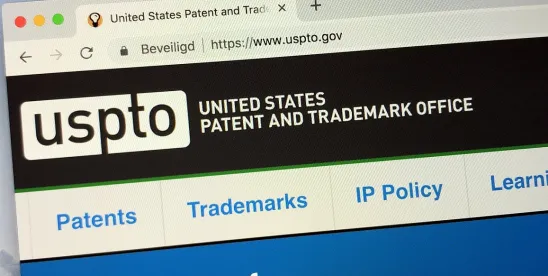As discussed in two of our recent blogs (here) and here), the United States Patent and Trademark Office (USPTO or Office) recently proposed substantial patent fee increases for continuing applications and terminal disclaimers. The USPTO is also proposing substantial increases for an applicant to request continued examination of an application whose claims have been rejected, but only minor increases for appeals of rejections. As we discuss below, these increases are likely to affect strategies for prosecuting patent applications.
Background
While a patent application is pending, a patent applicant has a variety of procedural tools at their disposal to secure allowance of their patent applications. One such tool, which can put application claims in optimal order, is one or more requests for continued examination (RCEs). When the applicant files an RCE, the applicant can secure another opportunity to amend the claims. Often, a patent examiner will agree with the claim amendments and allow the application. Sometimes, an agreement cannot be reached. During these times, the applicant can choose to take their disagreement with the examiner to a higher authority, the Patent Trial and Appeal Board (PTAB), by filing an appeal.
A New, Steep Tier for RCE Fees
In response to an examiner’s final rejection, an applicant may file an RCE when they choose to continue to amend their claims. If they do not file an RCE, the applicant must file an appeal or abandon the application. There is no limit to the number of RCEs that an applicant can file. Currently, the USPTO’s fee schedule splits the RCE fee into two tiers: a fee for a first RCE at a lower cost, and a fee for a second or subsequent RCE at a higher cost.
The USPTO’s proposed rules add a third, much more expensive tier to the current two tier system. The proposed rules nominally increase the first RCE fee and more substantially increase the second RCE fee, and add a higher fee for additional RCEs. The tiers for an undiscounted applicant under the new rules will be $1,500 for the first RCE, $2,500 for the second RCE, and $3,600 for the third and subsequent RCEs. These fee amounts represent 10%, 25%, and 80% increases, respectively, over existing fees. An applicant with a small entity discount is set to receive a 60% discount on these fees, and a so‑called micro entity will receive an 80% discount.
Extrapolating USPTO data from 2021, it appears that less than about 10% of RCE filings qualify for the highest proposed fee tier: 3rd and subsequent RCEs.
The USPTO reasons that the much higher fee for second and especially the third and subsequent RCEs may reduce the number of RCE filings. The Office’s desire is that applicants will favor ending prosecution with an appeal or by reaching an agreement with the examiner to secure allowance. Indeed, the appeal fees in the proposed rules will go up only slightly compared to the large jump in RCE fees.
If an applicant does not choose either of these paths, and instead extends the pendency of their application with a long chain of RCEs, the patents may issue sufficiently late that one or more maintenance fees that normally are due a certain number of years after a patent issues will be missed. Maintenance fees help the Office to recover costs which patent filing fees and the like do not cover. Higher RCE fees will help with this recovery.
If an application files fewer RCEs during prosecution, the pendency of the patent application is usually shorter. An underlying benefit of shorter patent pendency for the Office is the possibility of recovering more maintenance fees. This thinking also plays into the USPTO’s steeply tiered fee structure for continuing applications, as we have discussed here.
Might Appeals Become a Cheaper Alternative to RCEs?
Applicants who file multiple RCEs instead of an appeal most often are looking to find agreement with an examiner. These applicants can be reluctant to place the matter in the hands of the PTAB. One reason for their reluctance is that appeals are expensive. However, with RCE fees going up 25% or even 80%, and appeal fees going up only 5%, applicants may be emboldened to go to the PTAB instead of continuing to fight with the Examiner.
The proposed 5% increase in appeal fees raises the undiscounted fee for filing a notice of appeal from $840 to $880; for forwarding the appeal to the PTAB from $2360 to $2480; and for requesting an oral hearing from $1360 to $1430.
If an applicant is facing a final rejection of its claims before the five or eight year mark from their application’s earliest effective filing date, also known as earliest benefit date (EBD), it may be cheaper to file a continuing application than an RCE. When the applicant files a continuing application less than five or less than eight years after the EBD, they avoid the surcharge of $2,200 after five years and $3,500 after eight years, respectively.
For applications that have been pending for a long time, the applicant must choose between the high cost of either a third or subsequent RCE, a continuing application with a hefty surcharge, or an appeal. The applicant may find the appeal more attractive, even accounting for attorney’s fees. Compromising with an Examiner invariably involves narrowing claims. Balancing claim coverage and cost, an applicant may well choose to appeal.
However, because appeals can take time, even a successful appeal (reversing the examiner’s rejections) may cause an applicant who waits for allowance to file a continuing application to pay a significant surcharge. The PTAB has been issuing decisions on appeal more quickly, but examiners have been known to take months to respond to an appeal brief. Irrespective of the outcome on appeal, filing a continuing application after appeal may result in another one of the surcharges.
Presently, the USPTO has a Fast Track Appeals pilot program, under which decisions on appeal have come out in a few months rather than the usual year-plus. Under this program, for a $420 fee, a petitioner can get faster review of their appeal. The pilot program is set to expire July 2, 2024, before the proposed rules would take effect. The USPTO has extended the program twice. If there is a third extension, applicants with their applications on appeal could save some time and potentially avoid the continuing application surcharges. The program has not been used much. If it stays in effect with the new fees, applicants may use the program more.
Takeaways
The proposed steeply higher fee structure gives applicants good reason to rethink their prosecution strategies. The effect is deliberate. The USPTO is going after applicants’ purses to induce applicants to engage in more compact prosecution.
When the rules take effect, one approach for applicants to condense prosecution and to avoid some of the fees is to file multiple applications with the same specification, but different claims, on the same day. Each of those specifications still would be part of the overall patent family. Each would have the same, longest possible clock for filing future continuing applications. This concurrent filing strategy can help avoid the five and eight year continuing application surcharges. An applicant could pursue rapid allowance of a first application, either by aggressively narrowing claim scope or, for example, by filing under the Prioritized Patent Examination, or Track One Program. The other co-pending applications could be examined on the more typical and slower schedule, but could issue within the five year time frame and if not, another continuing application could be filed without incurring the higher continuation fees..
The benefit of the above strategy becomes clear when considering the compounding effect of prolonged prosecution under the proposed rules. For example, if an applicant files a continuing application after the five year mark, and they need a third or subsequent RCE for whatever reason, they would face tremendous fees. The above approach would avoid those fees.
Another approach that applicants can take is to reduce the number of RCEs. Applicants can closely consider the claims in each application. They can consider what their goals are during an early stage of prosecution, sooner rather than later. Applicants may find it worthwhile to pay for a little attorney time to help avoid higher tier RCE fees. This approach can help not only with securing allowance, but also with readying a case for appeal.
Yet another approach that applicants can take goes hand in hand with the preceding one. Applicants can pursue appeals more readily. If the claims are where an applicant wants them to be, and there is an impasse with the examiner, the applicant may save money in the long run by being decisive in pursuing an appeal.





 />i
/>i

